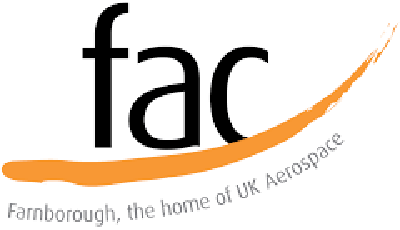Clarity key for northern aviation in pivotal year
As the UK gears up for a General Election in 2024, Caroline Litchfield, partner at leading independent law firm, Brabners, outlines the role a clear industrial strategy could play in supporting the aviation industry’s growth plans.
January is often a chance for businesses to take stock of performance, reassess priorities and look ahead to the challenges and opportunities that will shape their prospects in the coming year.
As a firm anchored in the North with links across aviation and the wider manufacturing sector, we’ve been maintaining a strong dialogue with firms across our network as they take this time to consider how the regulatory landscape will change in the months to come.
These conversations paint a picture of a sector poised to capitalise on recent government investment – from the advanced manufacturing pot announced in the budget to the latest tranche of regional Investment Zones. At the same time, northern firms and their R&D partners are ready to accelerate and implement the latest technological advancements in areas like net zero, which will revolutionise the way the industry operates.
A recurring theme of these conversations is how a fully refreshed industrial strategy could play a key role in underpinning this progression, leaving it at the top of many businesses’ wish lists for the year ahead.
In the aviation sector and beyond, there is growing consensus over what such a strategy should entail.
Ready for take-off
A first topic for the UK’s next government administration to consider is how it plans to boost investment in manufacturing.
In recent years, it’s been inspiring to watch the sector rise to tackle the key challenges of our time. From accelerating the net zero transition to embracing the opportunities offered by digitalisation and AI, the sector has thrown its full weight behind efforts to innovate for the future.
Achieving this, however, is expensive. With this in mind, the Chancellor’s Autumn Statement contained a great deal for the sector to be excited by – not least an announcement of £4.5bn of new funding to support the UK’s broader strategic manufacturing sectors.
The new funding – which runs from 2025 to 2030 – includes just under £1bn of fresh backing for the aerospace sector to support the transition to net zero through the development of energy efficient and zero-carbon aircraft equipment. In essence, it represents a pivotal opportunity for northern aerospace to continue to solidify its position at the forefront of international innovation.
However, the devil is in the detail – or lack thereof.
Allocating this funding will take time, and it will take even longer until it begins to deliver tangible benefits. Firms are already putting forward projects that would be enhanced by central government funding. However, with significant regulatory hurdles to overcome in the process, these plans would ultimately benefit from full details of how, when and where the money will be deployed.
In this period of uncertainty, it’s key that the government – and its political counterparts – continue to engage with the sector as it seeks to plan how best to navigate the changing industrial landscape in the years to come.
The skills challenge
Of course, without developing a workforce capable of delivering these ambitions, forward planning can only get the sector so far. For this reason, skills considerations should form an integral pillar of the next government’s industrial strategy.
The skills gap in the aviation sector has been well publicised. Recent data from the national trade association Aerospace Defence and Security (ADS) indicates that there are currently more than 10,000 job vacancies across its membership, with three quarters seeing skills shortages as having a major impact on their business’ performance.
A failure to reverse this trend would leave the sector in a difficult position – yet it’s important to recognise that there is no quick fix. Developing a skills pipeline takes time and resources, with the payback time on investment often taking years and transcending political cycles. For this reason, it’s important that we take action now so that we are able to reap the benefits sooner.
Ways in which to address the North’s broader skills gap have been a key focus of debate among Brabners’ True North network – which comprises change-making organisations from across the region, including aerospace leaders like the AMRC. A key theme we’re noticing is a strong willingness for increased collaboration between academia and industry – a sentiment that has been mirrored by the current government administration through the introduction of T-levels, which place industry experience and vocational training at their heart.
Moving forwards, it’s important that these ambitions remain aligned, while firms continue to reach out to underrepresented communities and provide new pathways into the industry.
Embracing collaboration
Perhaps the most important benefit that an industrial strategy can deliver though is certainty.
Regardless of which political party is in power coming 2025, the challenges the sector faces are set to endure past the lifespan of a single government. Ultimately, any industrial strategy must transcend the interests of the administration it is rolled out under. Everyone benefits from a consistent plan that nurtures industrial growth.
However, despite the clear importance of the year ahead, the onus cannot just be on government for UK industry to succeed. As a sector and a region, it’s important that we maintain an open dialogue with one another and continue to collaborate effectively.
By providing this clarity and embracing one another’s successes, we can further cement UK aviation’s position at the forefront of international innovation






